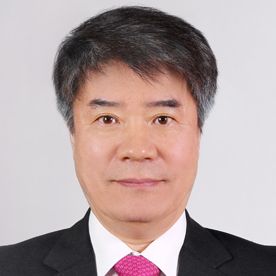Article
Closure in Heart After Stroke Improves Outcomes
Author(s):
No events of primary endpoint occurred in PFO closure arm, whereas it developed in 6 of 60 patients receiving medication therapy alone.
Jae Kwan Song, MD, a cardiologist at Asan Medical Center

Jae Kwan Song, MD
Findings presented at the 67th American College of Cardiology’s Annual Scientific Session indicates that patients who received a medical device to close the patent foramen ovale (PFO) after a stroke fared better after 2 years in comparison with those who received stroke-preventing medications alone.
The findings support results of several trials and suggest that patients with a higher-risk PFO are likely to benefit from the device.
“Considering the high prevalence of PFO in the general population and cryptogenic stroke patients, the key to appropriate use of this medical device is determining how to select optimal candidates for the procedure,” lead author, Jae Kwan Song, MD, cardiologist, Asan Medical Center, said in a statement. “Our study showed that the potential benefit from closure can be determined on the basis of the size of the PFO and the movement of the heart wall around the PFO.”
The trial enrolled 120 patients at 2 South Korean centers. All patients recently experienced a cryptogenic stroke and were found to have a high-risk PFO — meaning that the PFO was 2 millimeters across or larger, or the PFO was accompanied by an outgrowth of tissue protruding into 1 of the heart chambers.
Researchers halted enrollment for the trial early, based on results of several recent trials that it was unethical to continue assigning patients to receive the PFO closure device when it had clear benefits.
Despite the small trial size, the trial helped clarify those patients that are likely to benefit most from the medical device based on physical characteristics of the PFO.
Each patient received medication such as anticoagulants or antiplatelet drugs, and the specific type was determined by each physician — no direct oral anticoagulants were used in the study.
Half of the patients were randomly assigned to receive a PFO closure device (Amplatzer PFO Occluder, Abbott), while the other half received medical therapy alone.
High-risk PFO included PFO with atrial septal aneurysm or hypermobility or PFO size.
Patient outcomes were followed for 2 years.
The primary endpoint included a composite of stroke, major bleeding events and death from vascular causes. While no events occurred in the 60 patients receiving PFO closure, among those receiving medication alone, 6 had a stroke and 1 had a transient ischemic attack.
“The results suggest that treating 10 PFOs with a closure device would be expected to prevent, on average, about 1 stroke after 2 years,” Song noted. “With our study and other recent trials, the criteria for selecting patients for the procedure are becoming clear; in particular, the results suggest that closure is beneficial for those with high-risk PFO.”
PFO closure is suggested to be performed in select patients with cryptogenic stroke and PFO. The benefit of closing PFO for secondary prevention in patients with cryptogenic stroke can be determined on the morphologic characteristics of the PFO and adjacent interatrial septum.
Among those with a recent cryptogenic stroke attributed to PFO with high-risk echocardiographic features, the rate of primary endpoint and stroke recurrence was lower among those assigned to device closure combined with medical therapy than among those assigned to medical therapy alone.
Additional studies are needed to clarify the potential benefits of different medications when used post-stroke in patients with PFO as trials for PFO closure devices are inconsistent in medication selection.
Click here to sign up for more MD Magazine content and updates.
Related Coverage >>>
MI Protocol Can Improve Outcomes Between Men and Women
Statins Show No Impact on MACE, But Benefit for Patients Undergoing PCI





